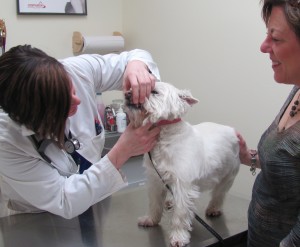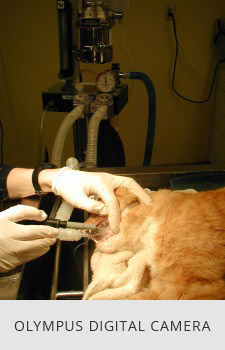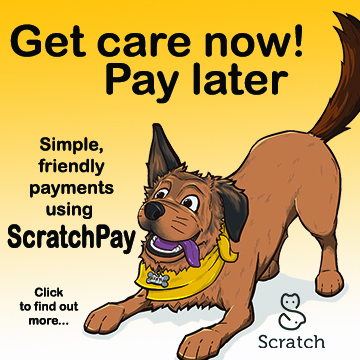OUR HOURS
MON — FRI : 8:30 AM — 6 PM
Sat: 9 AM — 1 PM
WE ARE HAPPY TO ACCEPT:
CASH * VISA * MASTERCARD * DISCOVER* american express
*Not all CareCredit promotions are available.
A credit card just for pet care!
your pet’s health portal
As your pet’s personal health page, The PetPage App is a special place for you and your pet.
You’re just one click away!
Our Sister Clinic

Full-service animal care, easy access, and the same great doctors. Please come visit us!
JUNE 2023: DUE TO THE INCREASED DEMAND FOR APPOINTMENTS AND OUR LIMITED AVAILABILITY, WE HAVE LIMITED AVAILABILITY FOR NEW CLIENTS. WHEN WE SCHEDULE A NEW CLIENT APPOINTMENT, YOU WILL BE REQUIRED TO MAKE A RESERVATION DEPOSIT EQUAL TO THE EXAM COST. OUR PRIORITY FOR SCHEDULING IS FOR OUR CURRENT CLIENTS. THANK YOU FOR YOUR UNDERSTANDING.
Dentistry
 Proper dental care plays a critical role in a pet’s overall comfort and heath. A build-up of plaque contains thousands of bacteria that can enter the pet’s bloodstream and lead to heart, kidney and liver disease, and infected teeth are painful. It is amazing how quickly tartar can collect in your pet’s mouth, particularly on their back teeth. During exams the doctor will check your pet’s mouth for signs of dental disease. They will determine what grade of dental disease your pet has. The grades are numbered one to four, and are determined by the following criteria:
Proper dental care plays a critical role in a pet’s overall comfort and heath. A build-up of plaque contains thousands of bacteria that can enter the pet’s bloodstream and lead to heart, kidney and liver disease, and infected teeth are painful. It is amazing how quickly tartar can collect in your pet’s mouth, particularly on their back teeth. During exams the doctor will check your pet’s mouth for signs of dental disease. They will determine what grade of dental disease your pet has. The grades are numbered one to four, and are determined by the following criteria:
Grade 1 — Gingivitis
Margin of attached gingiva (gum) is inflamed and swollen. Some plaque is present. Treatment can reverse this condition.
Grade 2 — Early Periodontitis
Entire attached gum is inflamed and swollen. Mouth is painful and odor begins to be noticeable. Professional treatment and home dental care can prevent this from becoming irreversible.
Grade 3 — Moderate Periodontitis
Cherry red and bleeding attached gum is being destroyed by infection and calculus (tartar). Sore mouth affects eating and behavior. Bad breath is present. Beginning of the loss of tooth attachment. This may become irreversible.
Grade 4 — Advanced Periodontitis
 Chronic bacterial infection is destroying the gum, tooth and bone. Bacteria may be spreading throughout the entire body via the bloodstream and may damage the kidneys, liver and heart.
Chronic bacterial infection is destroying the gum, tooth and bone. Bacteria may be spreading throughout the entire body via the bloodstream and may damage the kidneys, liver and heart.
If your pet is diagnosed with dental disease the doctor will recommend a dental cleaning. Depending on the grade of dental disease, there may also be dental x-rays needed and infected teeth may be extracted. Because general anesthesia is required, for the safety of your pet we recommend they have pre-anesthetic blood work done prior to surgery. The blood work checks the liver, kidneys and other body system function to help determine the safest anesthetic protocol for your pet.
Once the procedure has been scheduled the staff will go over pre-surgical instructions with you. These include:
- No food after 8:00 p.m. the night prior to surgery, but water should be available.Drop off the morning of the procedure at a previously scheduled time, allowing 15-20 minutes for check-in.
- When you arrive at the hospital the morning of the dental cleaning, one of our Client Service Representatives will ask a few basic questions and then escort you and your pet into an exam room. The surgery nurse will discuss the procedure, review the treatment plan and answer any questions you may have.
FREQUENTLY ASKED QUESTIONS
why do you have to use general anesthesia for a dental procedure? my groomer cleans my pet’s teeth when i bring them in for grooming!
Good question! “Anesthesia Free Dentals” is a misnomer. 60% of the tooth is below the surface of the gumline and that is where periodontal disease takes hold. In order to properly clean your pet’s teeth we must be able to get below the gumline which is not possible to do on an awake pet. For more information on the dental procedure go to
Understanding the Dental Procedure and Anesthesia Free Dental Concerns


